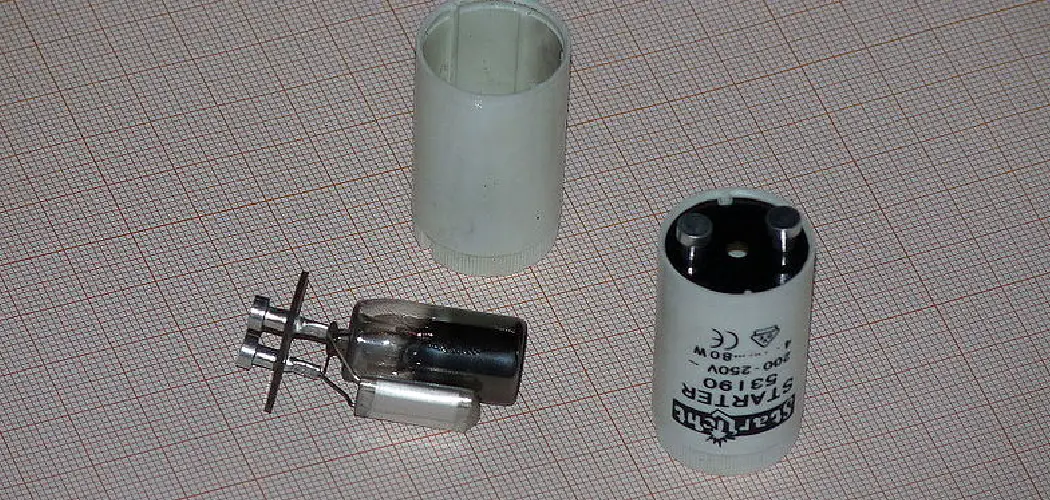Have you ever noticed some of your fluorescent lights intermittently flickering at random? Or have all of your luminaries suddenly gone dark without any prior warning? If so, then it’s likely the starter for them has malfunctioned and needs to be replaced.
While the task may seem daunting, this blog post will help you how to tell if fluorescent starter is bad, learn how to replace them properly and give tips on how to prevent fluorescent starters from going bad in the future. Read on to get key insights into managing fluorescent lighting which will make working with these household staples more straightforward!
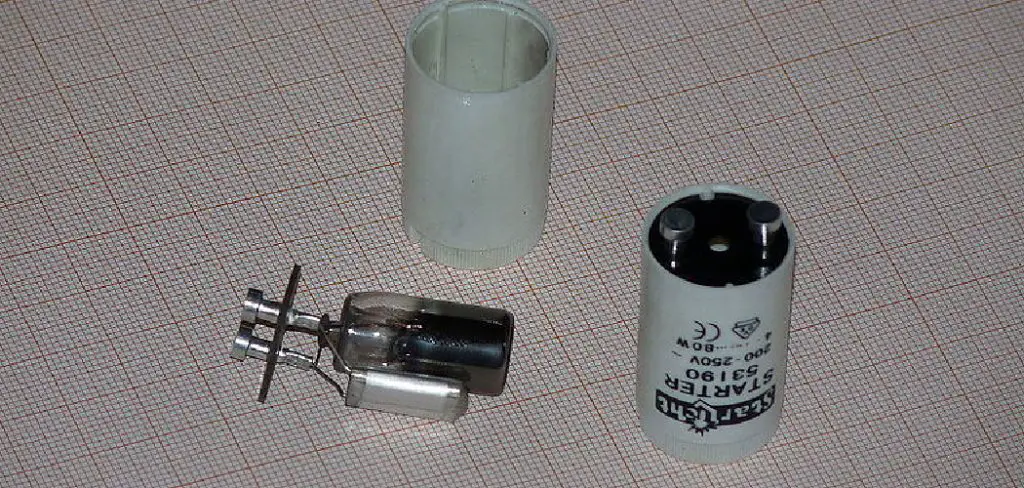
7 Most Common Signs on How to Tell if Fluorescent Starter is Bad
1. Flickering Lights:
The most obvious sign that your fluorescent starter is bad is when the light starts flickering or going dim at irregular intervals. When this happens, it means the electric current is interrupted, and the starter needs to be replaced. If your light is flickering, try replacing the starter first before considering changing other components.
2. Buzzing Sound:
Another sign that your fluorescent starter is bad is when you hear a buzzing sound from the fixture. This often indicates that the starter has burnt out and needs to be changed as soon as possible. Sometimes you may also hear a rattling sound; if that’s the case, then it could be caused by defective electrical wiring or loose connections.
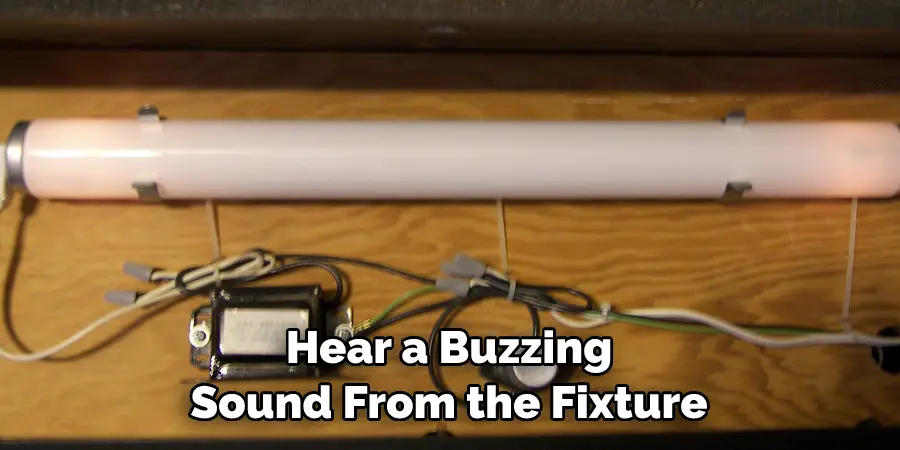
3. Slow Brightening of Lights:
If you notice that your fluorescent lights are taking longer to brighten up than usual, this could indicate a faulty starter. When this happens, the starter is unable to produce an adequate amount of electricity so the bulbs take longer to reach full power. If the problem persists, then it’s time to replace the starter.
4. Dim Lights:
Dim lights can also be an indication that the starter has gone bad. When this happens, it means that the current is not strong enough to light up the bulb completely. This is often caused by a build-up of dust on the starter’s contacts. Dim lights can also be caused by a lack of voltage, so make sure to check the circuit breaker and other components first before replacing the starter.
5. Overheating:
If you notice that your fluorescent light fixture is getting too hot, this could be another sign that the starter has malfunctioned and needs to be changed. The heat is generated due to a lack of current flowing through the bulb which causes it to overheat quickly.Sometimes, the heat may even cause a fire hazard, so it’s important to replace the starter as soon as you notice this problem.
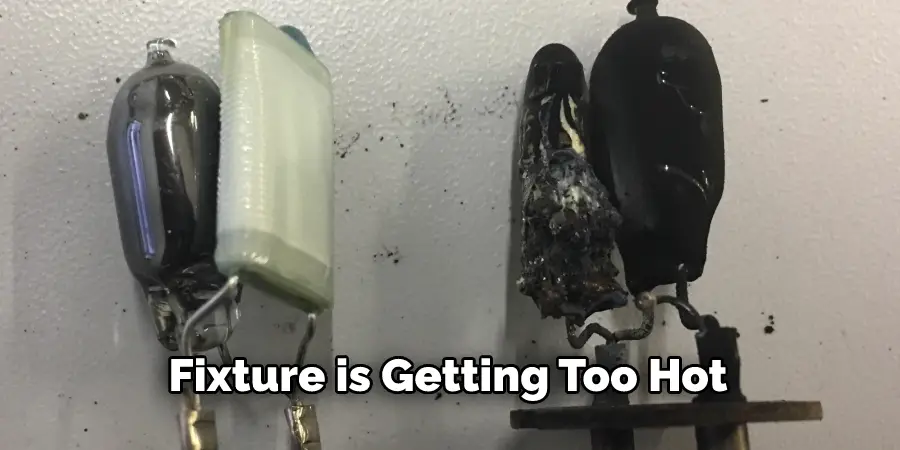
6. Inability to Turn On:
If you find that your fluorescent lights are unable to turn on, then this could also be an indication that the starter is bad. This often happens when the starter cannot produce enough power due to a defective internal connection or low electricity supply. This could also be a sign of a worn-out starter.
7. Bulb Bulges and Discoloration:
The last sign that your fluorescent starter is bad can be seen with the naked eye. If you notice that the bulb has begun to bulge and discolor, this could be a sign of a faulty starter. This often occurs when too much heat is generated due to inadequate current passing through the bulb which causes it to expand and change color.
If you have seen any of these signs, it’s time to replace your fluorescent starter with a new one. However, before doing so, make sure that all other components are in working order to ensure the longest life for your lighting fixture.
To conclude, understanding how to tell if a fluorescent starter is bad is important for the proper maintenance and longevity of your lighting fixtures. By understanding the most common signs, such as flickering lights, buzzing sounds, and dim lights, you can easily diagnose any potential problems with your fluorescent starters. Additionally, make sure to replace faulty starters right away to prevent further damage and ensure that your lighting fixtures work properly in the future.
Lastly, you can also help to prevent problems with fluorescent starters from occurring in the future by regularly cleaning and inspecting them for any signs of wear and tear. This will ensure that your lighting fixtures remain in good working condition for years to come.
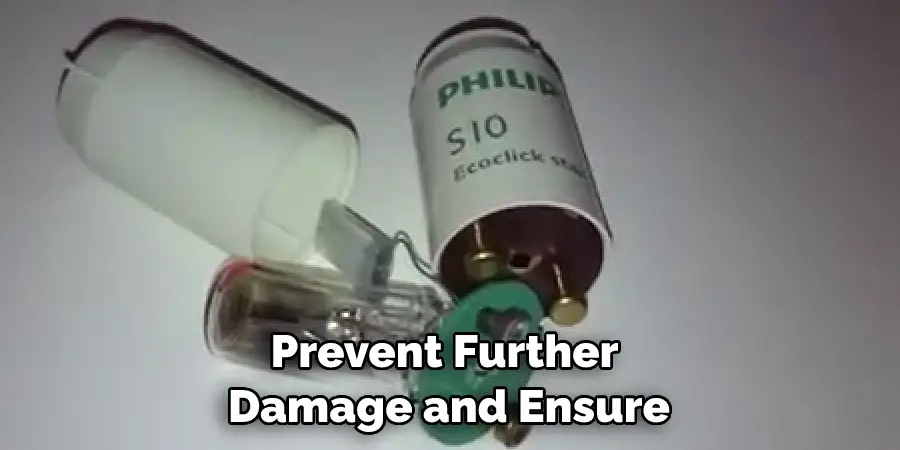
Tips on How to Prevent Fluorescent Starters From Going Bad in the Future
1. Check the fluorescent light fixture regularly for any signs of wear and tear, like broken seals or flickering bulbs. If you spot any problems, replace the starter as soon as possible to prevent further damage.
2. Keep the area around the fluorescent light fixture clean and free from dust and dirt buildup that can cause a short in the starter.
3. Install surge protectors to help protect your fluorescent light fixture from power surges and potential damage.
4. Ensure that the wattage of the bulb is compatible with the wattage of the starter, as mismatched bulbs or starters can cause problems.
5. Make sure to turn off any fixtures when they are not in use, as leaving them on can cause the starter to overheat and fail.
6. Inspect the fluorescent light fixture once a year or as needed, to ensure that all of the components are working properly. If you notice any problems with the starter, replace it immediately.
7. Replace fluorescent starters and bulbs when they start to dim or flicker, as this is a sign that the starter is failing.
Taking these preventive measures can help extend the life of your fluorescent light fixture and keep it operating safely and smoothly for years to come. Proper maintenance and regular inspection are key to preventing bad fluorescent starters from ruining your fixtures and causing costly repairs.
Can I Fix a Bad Fluorescent Starter?
Fortunately, a bad fluorescent starter is usually easy to fix with just a few simple steps. The first step is to check the voltage coming from the light fixture. If it’s too high or low, then that could be
causing the fluorescent starter to malfunction. You should also check for loose wires and connections, as these can disrupt the flow of electricity. Additionally, make sure that all of the bulbs are screwed in securely and free from corrosion. If all of these checks come up negative, then it may be time to replace the entire fluorescent starter unit with a new one. It’s easy to find replacement starters at any home improvement store or online. When selecting a new starter, make sure you choose one that is designed for the type of light fixture you have.
Finally, if none of these solutions work, then it may be time to contact an electrician. An electrician will be able to troubleshoot the issue and determine if the light fixture or fluorescent starter requires further repairs or replacement. They also have all of the proper tools and parts to make any necessary fixes in a timely manner. Keeping an eye on your fluorescent starters can help prevent any potential problems from occurring in the future. Regular maintenance checks are highly recommended, as this will help you catch any issues before they become a problem. Keeping your fluorescent lighting in working order will ensure safe and reliable operation for years to come.
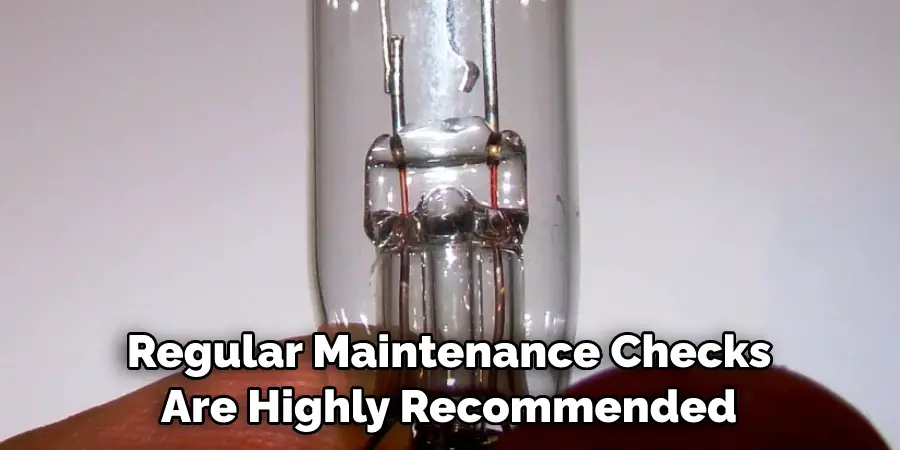
Frequently Asked Questions
What Are the Signs of a Bad Fluorescent Starter?
The most common signs of a bad fluorescent starter are if the lamp flickers, takes longer than usual to light up, fails to light consistently, or starts and stops flickering. Additionally, you may notice a buzzing sound coming from the light fixture.
What Causes a Fluorescent Starter to Go Bad?
A bad fluorescent starter can be caused by several issues, including a worn-out starter switch, overuse of the lamp, or repeated switching on and off. In addition, dust build-up in the fixture can also cause problems with starters.
How Can I Tell if My Fluorescent Starter Is Bad?
You can determine if your fluorescent starter is bad by checking it for any signs of wear or damage. If you see any cracks, discoloration, or corrosion on the starter switch, it’s likely that it needs to be replaced. You can also test the starter with a multimeter to measure its electrical resistance, which should be in the range of 4-7 ohms.
How Do I Replace a Bad Fluorescent Starter?
If you find that your fluorescent starter is bad and needs to be replaced, you will need to shut off the power to the fixture and then replace it. You can purchase new starters at any home improvement store. Once you have the new starter, simply unscrew the old one from the fixture and replace it with the new one.
Conclusion
knowing how to tell if fluorescent starter is bad and what to do if it needs replacing is essential for avoiding further problems with your light fixture. Recognizing the signs of a bad starter, such as flickering or buzzing, can help you identify when it’s time to replace it. If you find that your fluorescent starter is indeed bad, make sure to turn off the power before attempting to replace it. With a new starter in place, your light fixture should be back and running properly in no time.
